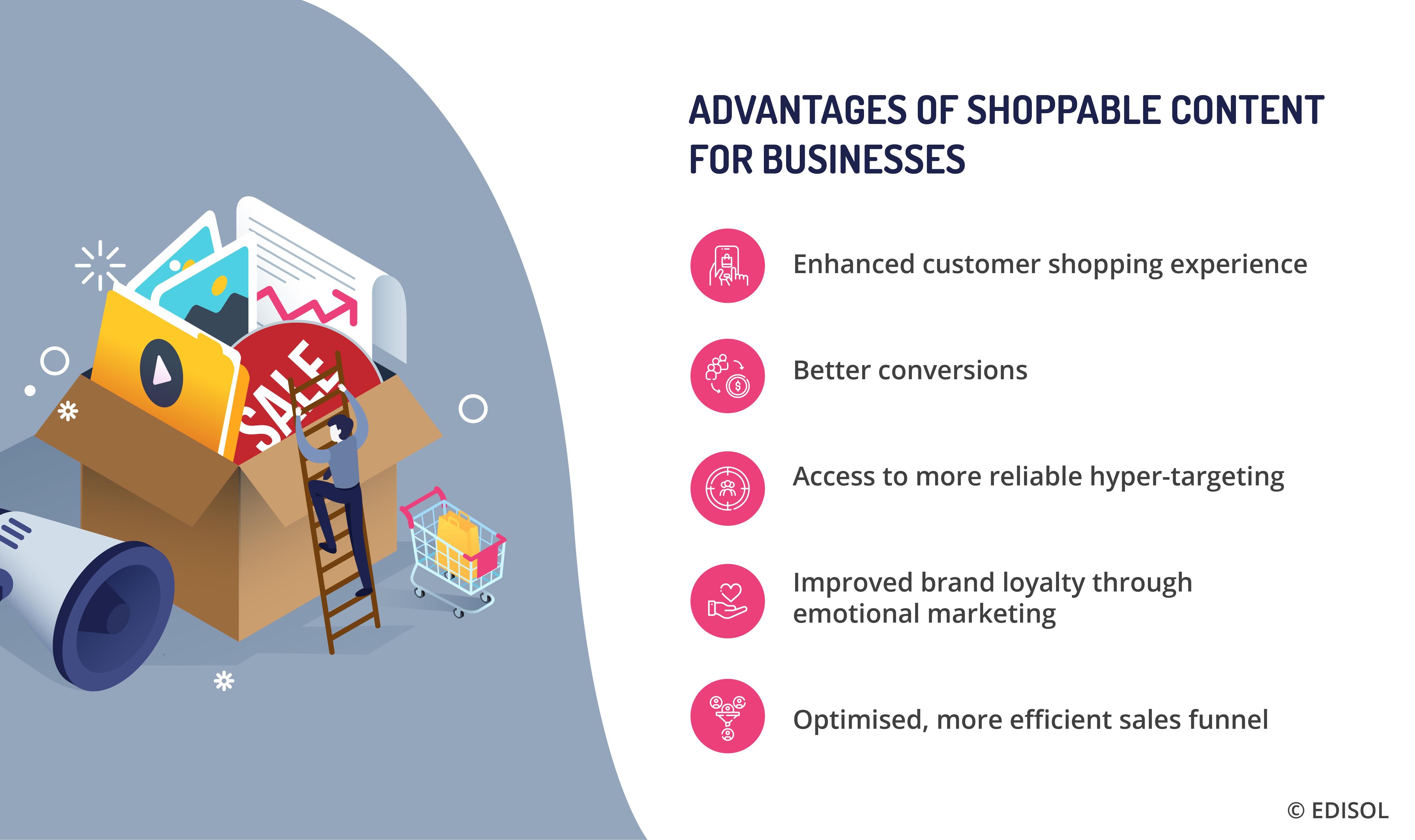Marketers and experts have always maintained one truth above all — content is king. Whether it is a retail brand, an e-commerce platform or a business, all entities turn to content in some form or another for marketing. A website is often the primary content platform, and it makes perfectly good sense to spend precious marketing dollars to build an online presence. However, brands are now gravitating towards modern solutions on social media. These social hubs have come a long way and aren’t just chatrooms and social watering holes like they used to be.
Today, businesses thrive on these platforms, especially with the introduction of a marketplace on popular sites like Facebook and Instagram. Naturally, where there is a market, there will be a seller, and at its core – content marketing to drive the sale. After all, this is the ultimate goal and there’s no better way to do it than with shoppable content.
A distinct breed of content, it is unabashed in its mission to convert the audience. Shoppable content is direct, provides opportunity, and incites action, thus delivering instant value. While it isn’t a new concept, it has taken social media by storm and has businesses questioning their approach to marketing in general.

To know more about shoppable content, its different avatars and the role it plays in modern social media marketing strategies, read on.
Shoppable content is direct, provides opportunity, and incites action, thus delivering instant value.
Different types of shoppable content
Like the different types of content formats in marketing, shoppable content also comes in several forms. While they all serve the same purpose and lead to the same place, the distinctions come into focus when you’re deciding which one to pick.
Usually, the choice is made based on two key factors:
- Existing sales channels
- Discovery preferences of target audiences
Brands need to be absolutely sure of these before picking the type(s) of shoppable posts they’d like to adopt. Here is an overview of each type and its USP.
1. Shoppable ads
These are different from the promotional ads created for social media sites. In fact, these pose as regular content but are charged with sales speak. Shoppable video content is often a better way to advertise, especially considering that most people are using an adblocker of some kind when scrolling through social media sites.
2. Shoppable social posts
Social media posts, while informative, can now be made into actionable assets. Instagram and Facebook, for instance, allow you to create regular posts but also link the images back to a product catalogue on the shop. There’s no disruption in scrolling and audiences have the option to directly shop without being exposed to an obvious ad.
3. Shoppable videos
Video is an effective storytelling tool and content marketing leverages storytelling and emotional marketing to make a sale. So, what is shoppable video? A combination of the two and a force to be reckoned with. In fact, 55% of customers watch videos before they opt to buy. Branded videos work even better and are the deciding factor for around 84% of people. YouTube has provisions to make videos shoppable, and so YouTube shoppable content is a speciality for some brands. Most social media sites also allow brands to post video ads that offer similar functionality.
Video is an effective storytelling tool and content marketing leverages storytelling and emotional marketing to make a sale. So, what is shoppable video? A combination of the two and a force to be reckoned with.
4. Shoppable UGC
Oftentimes the perfect social media post is one that your audience creates for you. User-generated content is a huge win for any brand as it delivers a coveted commodity – social proof or credibility. Now, these posts can be reshared and leveraged into shoppable content. Even in an inorganic sense, brands can employ micro-influencers to maintain the trust factor as it still falls under the umbrella of UGC. Shoppable customer content is gold, but there’s a thin line between a helpful review and an obvious ad placement.
Impact of shoppable content on social media marketing
The concept and primary function of social media has evolved over the years. While it was always meant to be a way to connect, social shopping slowly became a part of the experience. In fact, this shift from physical to digital shopping was expected, but the pandemic served as a catalyst, accelerating it by almost 5 years in some markets.
Naturally, the concept of social commerce took form and changed how social media marketing was done. Social media marketing analytics, for instance, is likely to shift focus from follower growth metrics to engagement metrics. On the other hand, the shoppable content statistics gathered from US markets alone suggests that marketers can’t afford to ignore social commerce tactics as there’s a lot to gain and much more to lose from inaction.
With social commerce cementing itself as a standard practice, shoppable content is likely to be the most common form of content out there. While brands and businesses will definitely continue to extract value from traditional content, there’s no denying the benefits of shoppable content.
However, creating relatable, witty, and engaging media is no easy task. It requires a skilled hand, one that’s got a finger on the pulse with pop culture and has the know-how to navigate the ever-changing landscape of social media. Edisol relies on targeted strategies to craft intelligent content to suit your brand tonality and goal. To know more and take your marketing to the next level, contact us.




